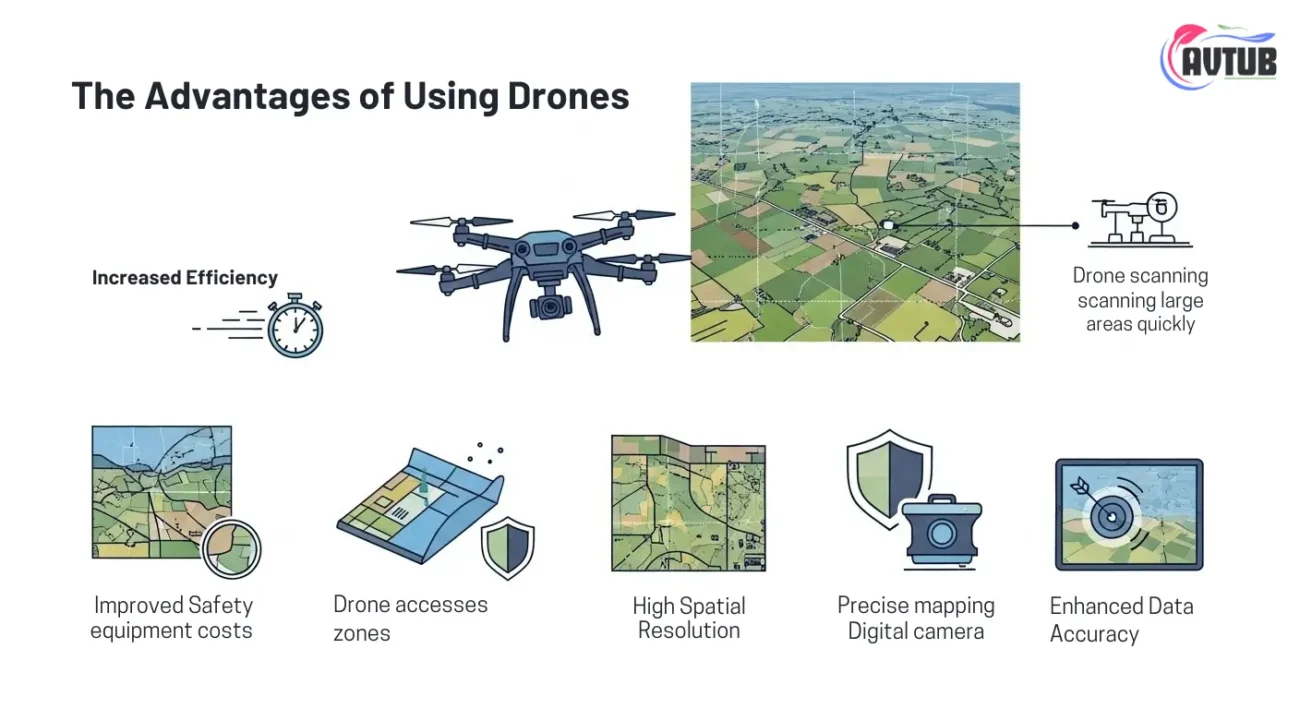The evolution of technology has brought immense changes in various sectors, and land management is no exception. With escalating demands for accurate and efficient land data, the integration of modern techniques has become inevitable. Among these advancements, drone surveying stands out as a groundbreaking innovation that is reshaping how land survey and management tasks are conducted.
Overview of Drone Surveying
Drone surveying refers to the use of unmanned aerial vehicles (UAVs), commonly known as drones, equipped with high-resolution sensors to capture detailed images of the Earth’s surface. This method of surveying is rapidly becoming a preferred choice for professionals in the realm of land management due to its versatility, efficiency, and the high level of detail it offers over traditional surveying methods.
Integration of Drone Technology
The integration of drone technology into land management is not just an innovative move but a strategic one. By using drones, surveyors can cover large and often inaccessible areas, collecting data that can then be processed to produce a variety of mapping products. These include topographic maps, 3D models, and volumetric measurements, amongst others, providing valuable insights for decision-making and planning.
The Advantages of Using Drones

Integration of drone technology in land management refers to the use of drones equipped with sensors and cameras to collect data and produce mapping products, enhancing decision making and planning processes.
Key Benefits:
- Increase Efficiency: Drones quickly collect data over large areas, reducing time and man-hours require for surveying.
- Cost-Effective: Reduces costs associate with traditional surveying methods and minimizes human error.
- Improve Safety: Drones access hazardous areas, reducing risks to survey crews.
- High Spatial Resolution: Captures minute details, crucial for environmental monitoring and landscape changes.
- Enhance Data Accuracy: Provides reliable data outputs, supporting inform decision-making.
Enhance Data Analysis and Accessibility
Another advantage is the enhance capability for data analysis. The digital nature of the data collect through drone surveying can be quickly process using Geographic Information System (GIS) software. This enables professionals to manipulate and analyze the data in various ways, leading to better inform, data-driven decisions.
In addition, the accessibility of survey data has improve significantly. With traditional methods, data might have taken weeks to process and become available. However, drones can provide high-resolution images and 3D models in a fraction of the time, making it easier for land managers to undertake quick and strategic planning.
Impacts on Various Sectors
Drone surveying is rapidly proving its worth across various sectors including agriculture, construction, mining, and environmental conservation. In agriculture, drones are use for precision farming monitoring crop health, improving land and water use, and enhancing crop yields. In construction and mining, drones serve to monitor progress, manage resources, and ensure compliance with safety regulations.
Regulatory Compliance and Ethical Considerations
As drone surveying grows in popularity, it is also important to consider the regulatory and ethical aspects. Many countries have develope regulations regarding the use of drones for commercial purposes to ensure safety and privacy. Adherence to these guidelines is essential for the sustainable growth of drone-support land management practices.
Adoption Challenges
Despite the numerous benefits, there are challenges associate with adopting drone technology. The initial cost of procuring drones and training personnel can be significant. Moreover, managing and processing large volumes of data requires expertise and sophisticate software. This may necessitate further investment in IT infrastructure and skill professionals to handle the computation and analysis of data.
The Future of Land Management with Drones
Drones are revolutionizing land management by providing accurate and efficient data collection, analysis, and monitoring. Here are some key points:
- Enhanced Surveying: Drones equipped with advanced sensors and cameras can capture high-resolution images and data, allowing for precise surveying and mapping of land.
- Increased Efficiency: Drones can cover large areas quickly and cost-effectively, reducing the need for manual labor and increasing productivity.
- Improved Data Analysis: Advanced data processing capabilities enable real-time analysis and insights, facilitating informed decision-making.
- Environmental Monitoring: Drones can monitor environmental changes, track changes in vegetation, and detect potential issues such as pollution or deforestation.
- Urban Planning: Drones can be used to create detailed 3D models of urban areas, helping planners design and manage cities more effectively.
Conclusion
Drone surveying is revolutionizing the landscape of land management. The ability to gather accurate, high-resolution spatial data efficiently and safely is transforming how professionals approach land surveying tasks. As the technology continues to evolve and integrate into various sectors, the potential for drone-supported land management will only increase, paving the way for a more sustainable and data-driven approach to managing our natural resources.


